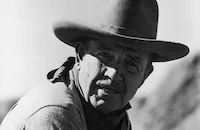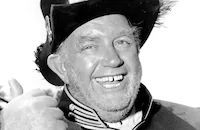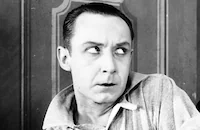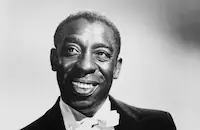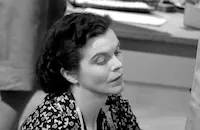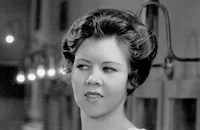The Flame of New Orleans was the first American film made by skilled French director Rene Clair, who made a name for himself with stylish French comedies like Le Million (1931) and A Nous la Liberte (1931). At the time of film's production, Clair was fleeing Nazi-occupied Paris during World War II and was anxious to continue making films in Hollywood. He originally wanted to make a movie with W.C. Fields and musical star Deanna Durbin, but producer Joe Pasternak suggested he instead work with Marlene Dietrich and use a script by Norman Krasna.
Dietrich was supportive of the choice of Clair as director, and she went out of her way to make him feel at home. It was not unusual for her to run all over Los Angeles to find authentic French bread and coffee to give him on the set. While Clair's skill was evident, Dietrich reportedly found him cold and disapproved of his harsh treatment of the crew. She was also unhappy with the choice of actor Bruce Cabot, best known for saving Fay Wray from the clutches of King Kong in 1933, as her sea captain love interest. She thought he was "stupid" and claimed that she paid for him to have acting lessons since he could never remember his lines.
When The Flame of New Orleans was presented to the Production Code Administration, the Hays Office refused to give it their seal of approval. They felt that Dietrich was too sexy and the film was too "dirty" to release. Screenwriter Norman Krasna later revealed that Universal simply dropped two of the middle reels in order to have it passed.
At Oscar time that year, The Flame of New Orleans was nominated for Best Art Direction, but it lost to How Green Was My Valley. The film was remade in 1952 as Scarlet Angel, which starred Yvonne DeCarlo and Rock Hudson.
Producer: Joe Pasternak
Director: Rene Clair
Screenplay: Rene Clair, Norman Krasna
Art Direction: Jack Otterson
Cinematography: Rudolph Mate
Costume Design: Rene Hubert
Film Editing: Frank Gross
Original Music: Samuel Lerner, George Parrish, Sam Perry, Charles Previn, Frank Skinner
Cast: Marlene Dietrich (Claire Ledoux), Bruce Cabot (Robert Latour), Roland Young (Charles Giraud), Mischa Auer (Zolotov), Laura Hope Crews (Auntie), Franklin Pangborn (Bellows), Clarence Muse (Samuel), Anne Revere (Giraud's sister), Andy Devine (Sailor) .
BW-78m.
By Andrea Foshee




